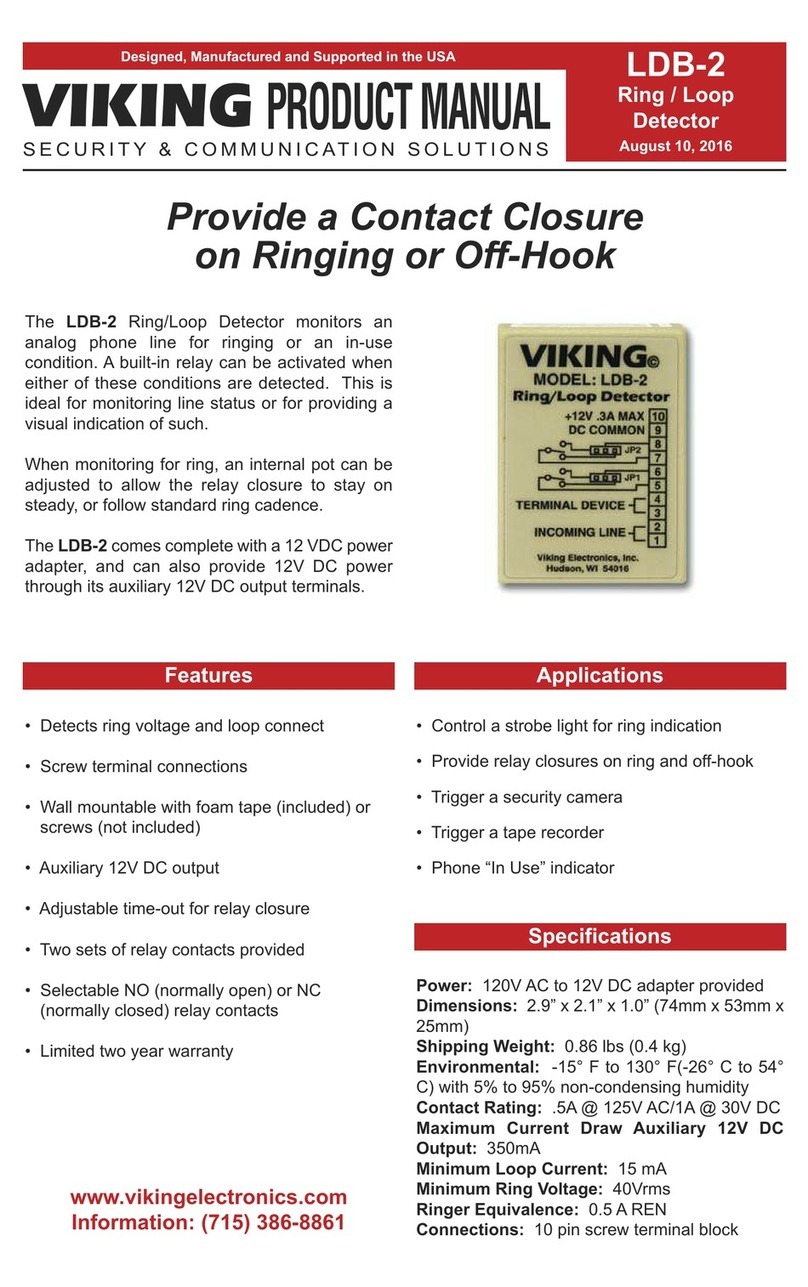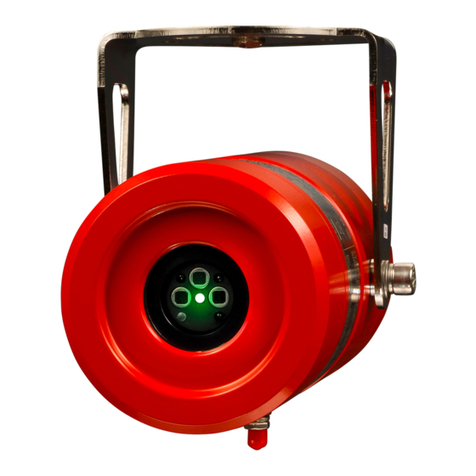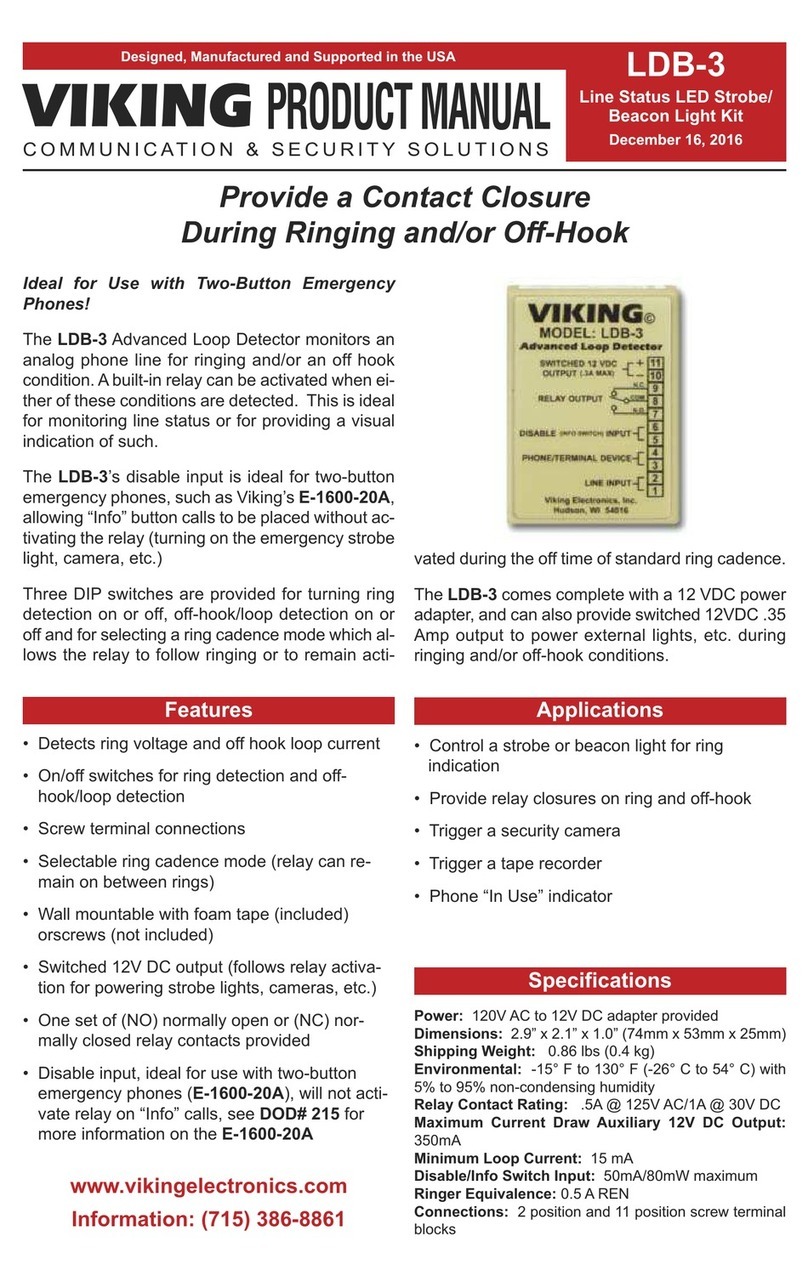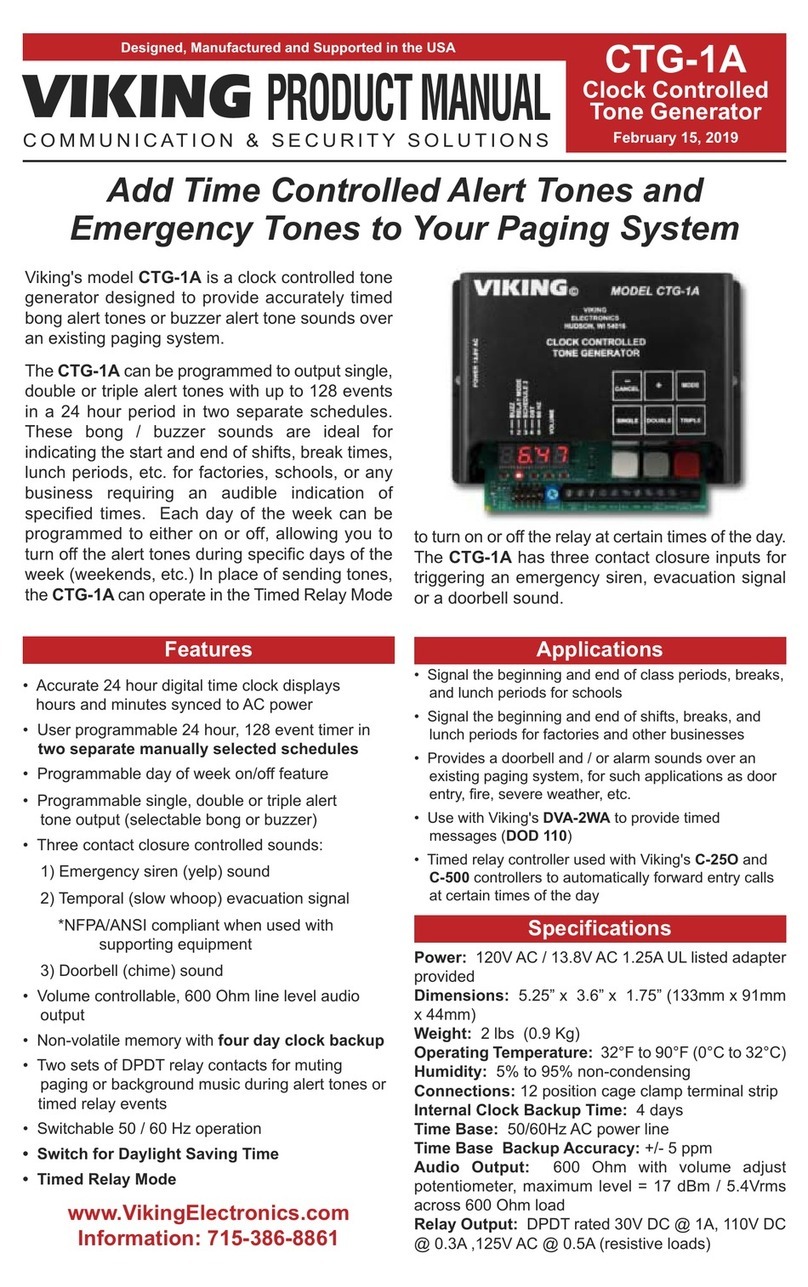
3
Safety and Technical Manual
Rev: 2
Form No. F_020621
VSF301 Flame Detector
This document is strictly private and confidential, reproduction without Viking Corporation approval is prohibited. © 2021 The Viking Group Inc.
HELP US TO HELP YOU
Every effort has been made to ensure the accuracy in the contents of our documents; however,
Viking can assume no responsibility for any errors or omissions in our documents or their
consequences. Viking would greatly appreciate being informed of any errors or omissions that may
be found in our documents.
Please email Viking Technical Services at techsvcs@vikingcorp.com or call 1-877-354-5464.
Please reference the Form No. and Rev shown in the upper right corner of this page.
THANK YOU
Contents
1Introduction................................................................................................................................5
Detector Features...............................................................................................................5
Intelligent Visual Flame Detection.......................................................................................5
2Safety Instructions .....................................................................................................................6
Warnings ............................................................................................................................6
Cautions .............................................................................................................................6
Important Safety Notices ....................................................................................................6
EN 54-part 10 Limitation of use ..........................................................................................8
3Installation .................................................................................................................................9
Detector Enclosure .............................................................................................................9
Mounting & Orientation .......................................................................................................9
Wiring Procedure..............................................................................................................11
0-20mA Output .................................................................................................................12
Relay Mode ......................................................................................................................14
Installation Checklist .........................................................................................................16
3.6.1 Mechanical ................................................................................................................16
3.6.2 Electrical....................................................................................................................17
4System Design Guidelines.......................................................................................................18
Earthing & Screening Requirements.................................................................................18
Power Supply ...................................................................................................................18
RS485 Communications ...................................................................................................18
HART Protocol..................................................................................................................19
Cable Selection ................................................................................................................19
DC Power .........................................................................................................................19
Video ................................................................................................................................20
RS485 Communication.....................................................................................................20
5Application Guidelines .............................................................................................................21
Positioning Requirements .................................................................................................21



































